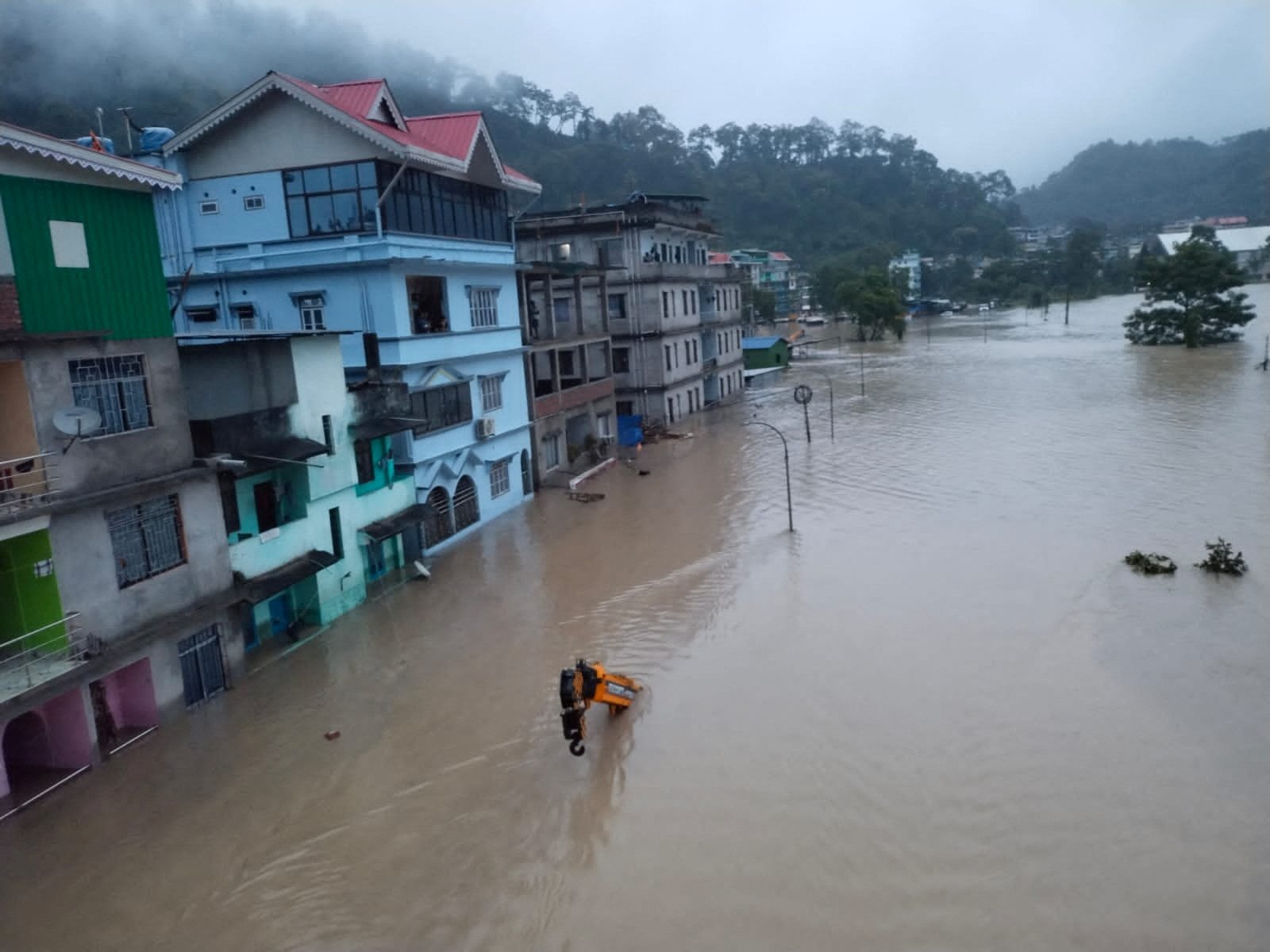A devastating disaster unfolded in the Indian Himalayas this week as Lhonak Lake, a glacial lake nestled in the northeastern state of Sikkim, overflowed, setting off flash floods and causing extensive destruction.
Government officials have reported a grim toll of at least 42 lives lost in this catastrophe, while close to 150 individuals remain unaccounted for. This tragic incident, catalyzed by relentless rainfall and potentially an avalanche spurred by a cloudburst, stands as one of the most severe calamities to hit the region in over five decades.
The ramifications of the flooding have been deeply felt by roughly 22,000 residents in the affected area. Startled by warnings of rapidly rising river levels in the dead of night, they hastily sought refuge from the impending disaster.
Javed Ahmed Ansari, a 44-year-old Teesta Valley resident who operates a river rafting business, shared his harrowing experience: “We sprinted towards the hills amidst the dense jungle… We watched in despair as homes were swept away. I can now only see the first floor of our house, which is buried beneath layers of sand, with everything submerged.”
In response to this catastrophe, scientists and government authorities are diligently collaborating on the creation of an early warning system tailored specifically for glacial floods originating from Lhonak Lake. Once fully operational, this system is anticipated to offer residents more time to evacuate in case of similar emergencies, potentially averting future disasters.
This heart-wrenching incident is a stark reflection of a broader pattern of extreme weather events occurring in the Himalayan region of South Asia, a phenomenon scientists attribute to the far-reaching impacts of climate change.



